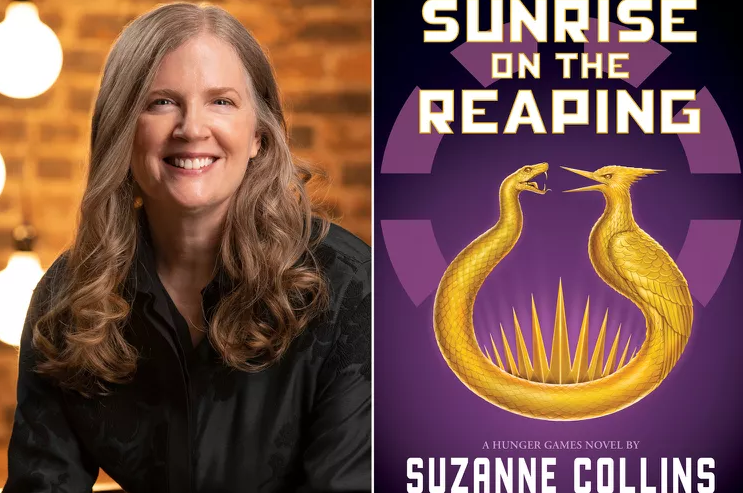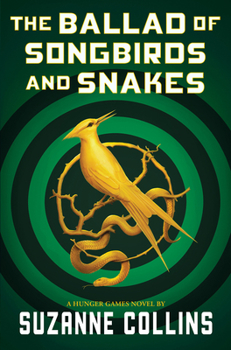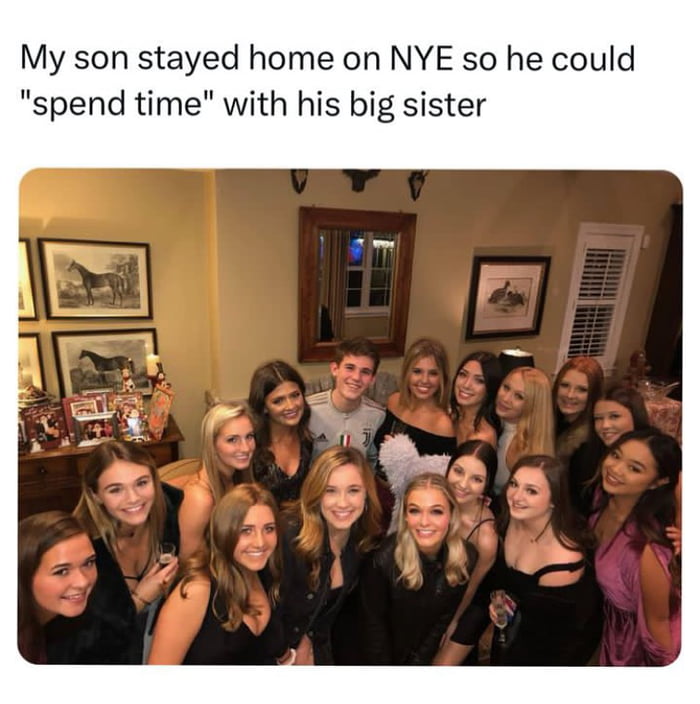
 Photo by Todd Plitt, Scholastic
Photo by Todd Plitt, Scholastic
With a week to go until the publication of the second Hunger Games series prequel, let’s take a look at the five things we have been told about Sunrise on the Reaping.
(1) The Plot — and the Ending?
From the Sunrise Amazon page:
When you’ve been set up to lose everything you love, what is there left to fight for?
As the day dawns on the fiftieth annual Hunger Games, fear grips the districts of Panem. This year, in honor of the Quarter Quell, twice as many tributes will be taken from their homes.
Back in District 12, Haymitch Abernathy is trying not to think too hard about his chances. All he cares about is making it through the day and being with the girl he loves.
When Haymitch’s name is called, he can feel all his dreams break. He’s torn from his family and his love, shuttled to the Capitol with the three other District 12 tributes: a young friend who’s nearly a sister to him, a compulsive oddsmaker, and the most stuck-up girl in town. As the Games begin, Haymitch understands he’s been set up to fail. But there’s something in him that wants to fight . . . and have that fight reverberate far beyond the deadly arena.
For readers of the Hunger Games original series, this is not much of tease. We’ve read about the Quarter Quell that Haymitch Abernathy won in Chasing Fire, chapter 14, in which Peeta and Katniss watch the edited tape of how he survived. All Ms Collins’ books are twenty-seven chapters long, which makes chapter 14 of Chasing Fire the central or pivotal chapter of that book and of the entire series. In the coming week we’ll be taking a deep dive into it, as you’d expect.
But we know how Haymitch’s Hunger Games experience ends or at least how the Capitol edited the story. That’s a first for anything Collins has written.
(2) We Have the First Two Pages of the Story
Scholastic released a teaser as a kind of ‘book trailer’ and it has quite a bit of information we didn’t have from Haymitch, who said relatively little about his Games in the Katniss and Peeta Saga. If you haven’t read it, you can read it at one of the several venues that claim to have it exclusively. Here’s the Barnes & Noble version.
I hope to give this excerpt a close reading in the next few days with Elizabeth Baird-Hardy but the top three notes of interest are that Haymitch is the narrator of the opening chapter (and I hope the rest of the book), it is his 16th birthday and as a gift to Abernathy fans we get to meet his younger brother and mother as well as a brief look at their subsistence existence, and, last but not least, it is a Reaping Day times Two because of the Quarter Quell and our hero wants to spend some time with his true love, Lenore Dove.
That last took me by surprise because I assumed Haymitch was taken with one of the Donner twin sisters, Maysilee and her unnamed twin, the woman who became the District 12 mayor’s wife and Madge Undersee’s mother. Turns out Maysilee is not the object of his affection but one of the other District 12 Quell tributes described in the book blurb above as (take your pick) “a young friend who’s nearly a sister to him, a compulsive oddsmaker, and the most stuck-up girl in town.” The Hunger Games wiki writers for reasons unknown to me are convinced Maysilee is the “most stuck-up girl in town.”
I wrote in the run-up to the publication of Mockingjay that Mrs Undersee was the real Gamesmaker of the series (and that Madge may be Haymitch’s daughter). So, yeah, I’m really interested in this novel, even if we know Haymitch is the Quell winner.
(3) Scholastic Is Running Some Odd Deals as Part of the Sunrise Launch
From the BookRiot.com page for the new book:
Sunrise on the Reaping will also be released as part of a 5-part hardcover Hunger Games box set. Additionally, multiple booksellers will carry a special edition of the hardcover novel. Barnes & Noble’s edition includes an in-depth conversation between Hunger Games author Suzanne Collins and YA author David Levithan. And if you preorder from B&N, you also have an opportunity to win a Barnes & Noble gift card, the Hunger Games deluxe edition boxed set, and Hunger Games merch. Wal-Mart’s special edition includes a two-sided collectible poster featuring a Hunger Games timeline. Wal-Mart is also offering a special edition of the book, but it’s unclear what the additional features will be. Meanwhile, indie bookstores are offering exclusive temporary tattoos with your book purchase.
As you might imagine, I’m not interested in the hardcover book set — and have a hard time imagining anyone else who is. Hunger Games fans already have the first four books and know there will be at least a sixth. Why buy a set now? De gustibus, I guess.
What I do want is a copy of that interview with Collins, who very rarely speaks or appears in public. I ordered a copy of Sunrise as soon as it appeared on Amazon, though, and I won’t be buying a second copy just to get this interview. It’s another head scratching promotion along with the five book set because how many people are going to make their decision about where to get this book based on the ‘Surprise Inside’ interview? Why not use the interview as a means to ramp up interest in the new book?
(4) What Suzanne Collins Has Said Publicly About Sunrise
From the People magazine article about the Sunrise cover release:
Along with unveiling the book’s cover, Collins teased what fans can expect in the new novel which follows her latest prequel, The Ballad of Songbirds and Snakes.
“With Sunrise on the Reaping, I was inspired by David Hume’s idea of implicit submission and, in his words, ‘The easiness with which the many are governed by the few,’ ” she said, per the release.
“The story also lent itself to a deeper dive into the use of propaganda and the power of those who control the narrative,” she continued. “The question ‘Real or not real?’ seems more pressing to me every day.”
Yes, this will be a subject of another post here. If Collins has a signature quality in her writing, it is a certain fearlessness in bringing challenging political, psychological, and spiritual subjects to her readers’ attention, albeit sufficiently imbedded in the tapestry that it never seems preachy (well, the Gregor the Overlander adventure that clearly was about Israel and the Palestinians may have crossed the line for some).
All of the Hunger Games books are about the “Real or not real?” question and about “those who control the narrative.” This was especially true in Catching Fire when there is a battle between the Capitol controlled Gamesmakers and all the artists trying to subvert their messaging to foster rebellion in the Districts. What we know about Haymitch’s Quarter Quell victory is that he brilliantly exploits the parameters, the actual border of his Hunger Games playing field, to win. Expect revelations about how the 16 year old from the Seam learned how to think that way and how others, wearing the blinders of “implicit submission” cannot.
(5) That Cover
Again, from the People magazine piece:
“The spiky sun rises on a symbol that will come to mean a lot to Haymitch Abernathy, as well as countless readers,” David Levithan, vice president, publisher and editorial director for Scholastic, described in a press release shared with PEOPLE.
“Artist Tim O’Brien has created yet another iconic Hunger Games cover — this one symbolically exploring one of the central themes of the series: how conflicting forces can be connected by their common nature, the songbird and the snake springing from the same source,” he added.
Does the name “David Levithan” mean anything to you? According to People, he’s a decision maker at Scholastic Books, a VP and their “publisher and editorial director.” Scroll back up to the BookRiot.com piece and you’ll see that he is described as “YA author David Levithan,” who was chosen at random, I guess, from all YA authors to interview Suzanne Collins for the Barnes and Noble promotional insert.
Here’s the thing. Levithan really is an accomplished writer of Young Adult Fiction. Check out his well-crafted Wikipedia page if you doubt that. He is considered “the most celebrated author in the category” of books celebrating same sex attraction for young boys. But he really gets a prize, on top of his many Lambda Literary Awards for Children’s and Young Adult Literature, for the kind of narrative control Collins is talking about when he presents himself as a “YA author” when interviewing the Hunger Games writer, Scholastic’s hottest property, without mentioning that he has anything but an objective position about this book series.
For what it’s worth.
With respect to the cover, this is easily the weakest of Tim O’Brien’s covers for the series; from the color choices to the font of the Sunrise title, it’s neither engaging in a shocking way or attractive. Except that the cover includes ‘A Hunger Games novel by Suzanne Collins’ at the bottom, I wouldn’t be tempted to pick it up.
 But Levithan’s comments, which I’m guessing reflect the staged conversation to promote the book (“interview”) he had with Collins for the B&N insert, may be worth thinking about. He said that the cover is “symbolically exploring one of the central themes of the series: how conflicting forces can be connected by their common nature, the songbird and the snake springing from the same source.” If that is from Collins, it certainly deserves a lot of exploration, because, unless he’s talking about “the series” as just the prequel books (largely about the genesis of President Snow thus far and the follow-up to the Songbird and Snakes title), I’m not at all sure where he is headed by calling this a “central theme of the series.”
But Levithan’s comments, which I’m guessing reflect the staged conversation to promote the book (“interview”) he had with Collins for the B&N insert, may be worth thinking about. He said that the cover is “symbolically exploring one of the central themes of the series: how conflicting forces can be connected by their common nature, the songbird and the snake springing from the same source.” If that is from Collins, it certainly deserves a lot of exploration, because, unless he’s talking about “the series” as just the prequel books (largely about the genesis of President Snow thus far and the follow-up to the Songbird and Snakes title), I’m not at all sure where he is headed by calling this a “central theme of the series.”
If President Snow plays a large part in this book, which seems likely, then Levithan’s note about O’Brien’s cover makes a certain sense. We’ll see how the rebellious Abernathy and the narrative control expert Snow both have their “sources” in a “common nature.” Their lost love? Their drive to escape poverty? Their understanding of political narratives to foster submission or rebellion? We’ll see!
A week to go — stay tuned!






